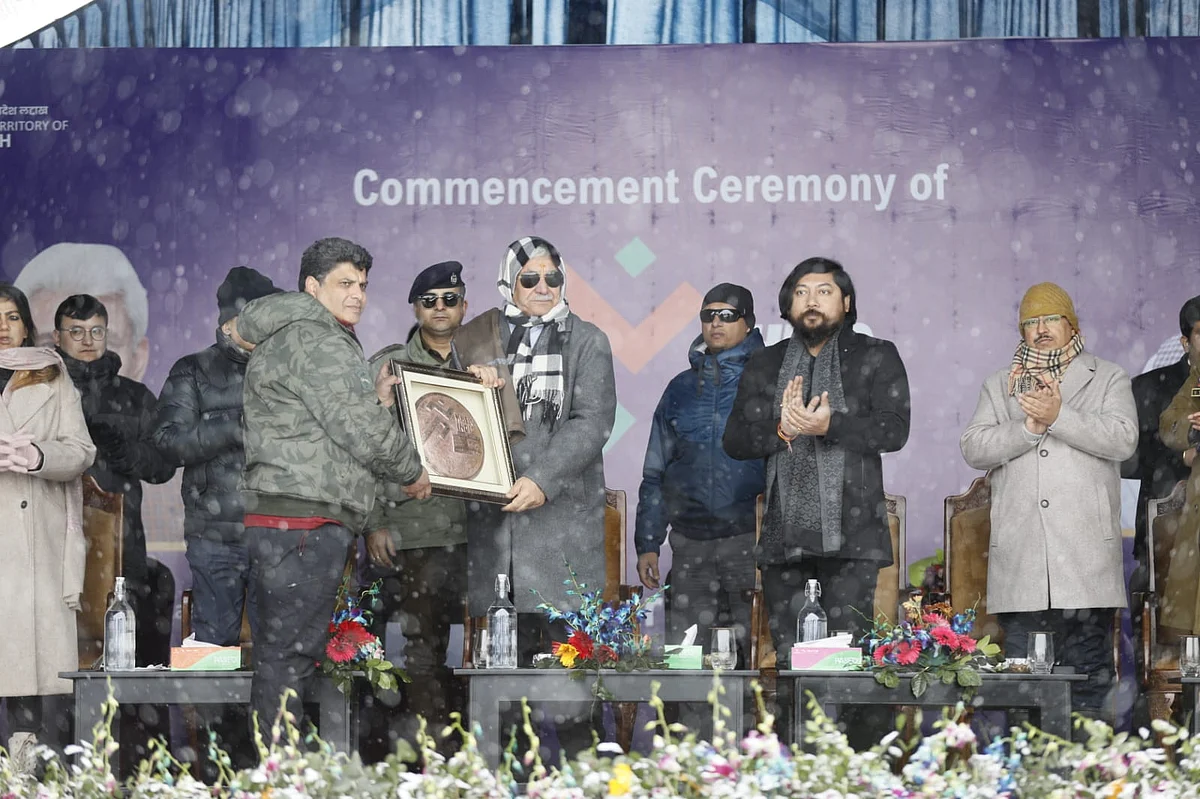Khelo India: Enjoying the biggest share of the pie, but is it giving results?
Official figures show few BJP-ruled states have been allocated a disproportionate share of the budget

The past year may not have been a particularly satisfying one for Olympic sport in India – with expectations of a double digit of medals in Paris 2024 falling short and the ongoing feud in the Indian Olympic Association (IOA) not really helping the country’s profile as potential Olympic hosts. Thankfully, it has not affected the allocation for sports in the Union budget which has seen an increase of Rs 352 crores compared to last financial year.
A bit of number-crunching shows that the total allocation has jumped from Rs 3442.32 crores in 2024-25 to Rs 3794.30 cr – with Khelo India scheme being allotted the biggest share of the pie at Rs 1000 cr. A pet project of the BJP government since 2017-18 aimed with the target for identifying grassroots talent and fostering a healthy sports culture in the country, the scheme received Rs 800 cr (revised from allocated budget of Rs 900 of 2024-25). Despite not being able to utilise its allocated Rs 900 crore, the budget has now increased to Rs 1000 (identical to 2023-24).
The fund is meant to be utilised namely in hosting the Khelo India Youth and University Games (KIYG), Khelo India Winter Games, to pay stipends of players, talent search, Khelo India centres, infrastructure development in states etc. The thinking behind prioritising Khelo India, as apparent from Union Sports Minister Mansukh Mandaviya’s earlier speeches, is to lay the foundation of a system which can produce potential champions for the 2036 Olympics – the edition for which India have submitted a ‘letter of intent’ to play the hosts.
The question which begs to be asked is after being nearly eight years in existence, has the gamut of Khelo India Games been able to serve it’s purpose? A personal experience of being associated with one of the editions of the KIYG is that while it’s a hugely laudable exercise to bring young athletes together without any major logistical goof-ups – the screening or serious talent and their development to make it to the next level is yet to be developed. There are other problems like no fixed calendar to conduct the Games — sometimes it's held just days before board examinations or months after junior nationals conducted by a sports federation.
The politics of allocation of the grants for KIYG is also too stark if one looks at the statewise breakdown of budgets over the years. The official figures released last July shows Gujarat and Uttar Pradesh, the two BJP ruled states, been allotted whopping sums of Rs 426.13 cr and 438.27 cr, respectively. There is a sharp disparity in terms of allocation with the likes of say, West Bengal which received Rs 22 crores during the same period.
The response from the coaches and officials’ fraternity had been rather mixed about the benefits of the Khelo India programme. Two leading figures of the shooting fraternity, a sport which gave India three of the six medals won in Paris, were unanimous that it had been counterproductive to scrap the National Rifle Association of India’s (NRAI) own junior programme and put it overnight under the umbrella of Khelo India.

Raninder Singh, former president of NRAI and vice president of world governing body ISSF, said in an interview: ‘’If you want a team for Los Angeles 2028, you better give me my junior programme back. Let NRAI run it and call it Khelo India and whatever you want. But if they are (the government) are going to do it, we won’t have a team for Los Angeles.’’ The veteran administrator added in the same breath: ‘’Nothing is coming out of Khelo India neither at the national or international level.’’
Jaspal Rana, one of India’s most decorated shooters and personal coach of double medallist Manu Bhaker, says: ‘’I totally agree with him (Raninder). Khelo India is a junior programme only, it is just that they took everything out of federation’s hands and made it Khelo India.’’
Next KIYG in Bihar
A look at the multi-discipline events’ calendar at the beginning of the year throws up a surfeit of events – the 38th edition of National Games, meant to see serious competition among the elite athletes of the country, are currently underway in Dehradun, Uttarakhand. The KIYG and Khelo India Para Games will be held in Bihar in April while the Khelo India Winter Games is being held in two legs – one was in Ladakh in January and J & K in February.
The Winter Games leg of Khelo India is, more than a serious programme to develop athletes in such disciplines, a government-sponsored event to promote history and culture of such venues.
Is it case of one Khelo India event too many? One is free to draw own conclusions!
Follow us on: Facebook, Twitter, Google News, Instagram
Join our official telegram channel (@nationalherald) and stay updated with the latest headlines
